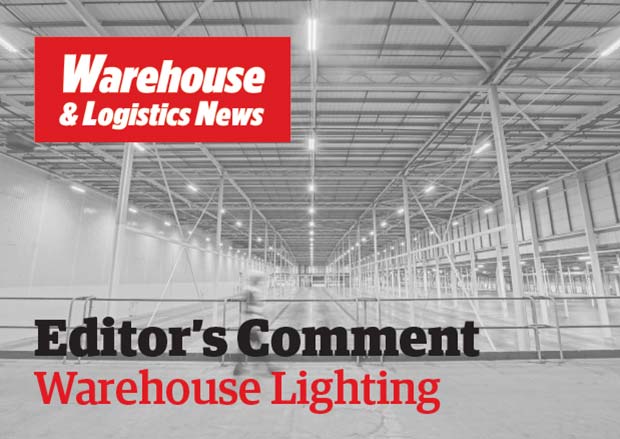The constant struggle for warehouse operators is to manage overheads without reducing productivity. Whilst increasing profits is always the main priority, making sure the warehouse facility is environmentally friendly and reducing electricity bills can have a significant impact on the bottom line. With poor lighting being the biggest single consumer of electricity in warehouses, taking up 34% of warehouse electricity bills, switching to light emitting diode (LED) lighting is the quickest influence operators can have on energy use and overheads compared to any other energy saving solution.
This article was first published in the August 1st 2020 issue of Warehouse & Logistics News, subscribe to the magazine by clicking here.
 The main advantage of LED is its energy efficiency. LEDs need far less electricity to power than traditional incandescents, halogen light bulbs and energy efficient light bulbs (CFLs). LED bulbs use over 75% less energy than incandescent lighting and around 60% less electricity than high-intensity discharge (HD) lamps. There is an even greater difference at low power levels. LEDs also last much longer than incandescent, halogen or CFL bulbs.
The main advantage of LED is its energy efficiency. LEDs need far less electricity to power than traditional incandescents, halogen light bulbs and energy efficient light bulbs (CFLs). LED bulbs use over 75% less energy than incandescent lighting and around 60% less electricity than high-intensity discharge (HD) lamps. There is an even greater difference at low power levels. LEDs also last much longer than incandescent, halogen or CFL bulbs.
Manufacturer and installer of energy efficient lighting solutions EcolightingUK has launched its new, mobile friendly and easy to navigate website. The new design, complete with fresh content, includes a large number of images from its many applications, features some videos and is responsive on both mobile and tablet devices. The website now has details on Ecolighting’s Pay as you Save scheme, which enables customers to install a new LED lighting system with zero capital outlay, increased light levels, zero maintenance costs and a cash positive outcome from month one after installation. The page includes lots of benefits and monthly saving estimate tables, as well as details of grants and testimonials.
UL and the Lighting Industry Association (LIA) have reached the next level of collaboration in terms of lighting product testing and certification. With the first agreement reached in 2018, the LIA began its journey with UL by successfully passing UL’s approval process last year in a Third-Party Test Data Program (TPTDP). Subsequently, tests based on UL Standards can be performed by the LIA laboratory and be accepted for certification around the world. This strengthened UL’s and the LIA’s position by offering LIA members and clients the ability to certify their products in their own country and for export across the globe.
It is worth businesses thinking about the life-cycle costs of their lighting technology in the same way they do with their materials handling equipment (MHE). While MHE accounts for around 25% of a warehouse’s annual energy expenditure, the cost of lighting the building with old fashioned or inappropriate lighting technology will make up 70% of the bill. This is why lighting is one of the most important investments a business can make. With lighting accounting for nearly 6% of global CO2 emissions, a global switch to LED technology could save over 1,400 million tons of CO2 and avoid the construction of 1,250 power stations.




Comments are closed.